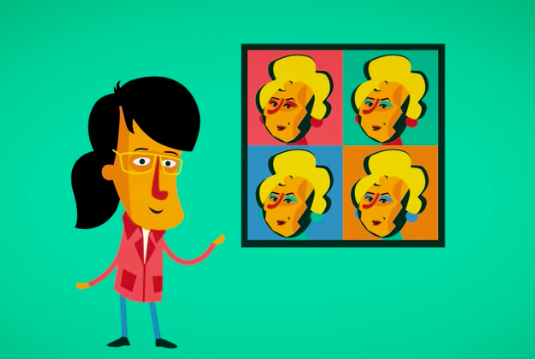
10 ways to teach creativity in the classroom
Education expert Sir Ken Robinson notes that in the factories of the 20th century, creativity was not valued. Yet in the startups of the 21st century, it’s critical for success. What can teachers do — right now — to prepare students for the world of the future? Below, 10 ways to teach creativity in the classroom:
1. Start student notebooks for ideas in the wild. If ideas are butterflies, notebooks are nets. Professional artists, scientists and writers often carry small notebooks to capture imaginative ideas before they fly away. For example, check out these ideas and sketches.
2. Explore new inspiration sources together. Creativity needs to be fed a steady diet of inspiration. Some tried and true sources? Nature, music, art, science fiction, travel — the list goes on. Anything that rewards student curiosity can feed creativity.
3. Research other makers during class. The world is full of people who regularly use their creativity to invent and make new things. Three great places to learn how they do it: Make, Instructables and Kickstarter.
4. Introduce mindfulness as a creativity tool. Science tells us that mindfulness meditation helps the brain. In the realm of creativity, it can boost a student’s ability to come up with imaginative solutions to a problem. For a great animated introduction to mindfulness meditation, check out Headspace.
5. Listen to fun stories about design. What is design? How does it affect our lives? This entertaining podcast shows how creative choices impact the world. To learn more about design, listen to 99% Invisible.
6. Brainstorm solutions to a common challenge. What’s the best way to come up with a great science fair project idea? Brainstorm a bunch of science fair project ideas first! Learn how to run a brainstorm in this article.
7. Invent a healthy snack for a picky eater. Health and food-related projects can be excellent ways to develop creative skills. Check out more experiential learning projects at DIY.org.
8. Try a real-world design challenge together. How might we improve learning and expand education opportunities for refugees around the world? This is a real-world design challenge that people are working on right now — and your class can participate in creating the solutions. Learn more at Amplify’s Refugee Education Challenge.
9. Begin #The100DayProject with your students. Do something creative, every day, for 100 days. Document your progress. It’s simple, but not easy! Read more about the #The100DayProject.
10. Start a TED-Ed Club at your school. Sometimes it’s hard to get students to share their creative ideas. A supportive club setting can help. Learn more about one option.




Unfortunately the UK education system is oriented towards paperwork rather than the students. It would be great to be fostering creativity, but someone needs to tackle the growing avalanche of paperwork and asessment that buries the enthusiasm of teachers to innovate.
Where does the teaching of creativity in the classroom really start? Let’s start with state education and standardised testing and Ofsted and performance management … Now, if they could all be linked to supporting teachers and helping them to promote the teaching of creativity in lessons, well, then we’d have a reinvigorated education system with teachers enthusiastic and willing to take these kinds of risks.
The UK is not alone. In the US, standardized testing drives the plot. No longer do teachers have the time or support for creativity.
You are right Paul, about the avalanche of paperwork and assessment. Writing lesson plans, charting standards, LEARNING new standards, documenting formative assessments for individuals and the class as a whole, preparing for summative assessments, testing in the fall and again in the spring, recording grades, making sure we have everything necessary for our teaching evaluation systems, etc; the list is unending and overwhelming.
As a middle school LA teacher, you can add continual essays to respond to with helpful feedback in a timely manner. I look for ways to add CHOICE to my lessons, but TEACHING creativity, fostering imagination, showing appreciation for thinking outside the box… There does not ever seem to be enough time, and after that avalanche of paperwork, not enough energy.
I constantly feel as if I must be doing something wrong, or I am not using my time well, and this is with 29 years of experience.
Then we are vilified by the public, the powers above, and the media.
When my students walk in the door, I am “on” for them, I respond to their needs, and that leaves little time for the creativity we really should value at this time. The jobs and careers our students will have when they graduate will certainly not be standardized; we are doing a poor job preparing them for them for the kind of thinking they will need in order to be successful in the future.
But I know that in just one or two more election cycles (Douglas Reeves), someone will come to understand this, and then teachers will once again be blamed for how we have been teaching. And the pendulum swings again.
I think it is Rick Wormelli who pointed out that although the pendulum WILL swing, we collectively have more information/knowledge each cycle.
Wormelli is a big proponent of teaching students to think metaphorically. That is one easy way to foster creative thinking in the classroom, though he suggests we can be more strategic about it.
I hope I didn’t hijack this topic… I did manage to bring my ranting back to the idea of creativity though.
Keep doing the HARD work!
Anything that rewards student curiosity can feed creativity.